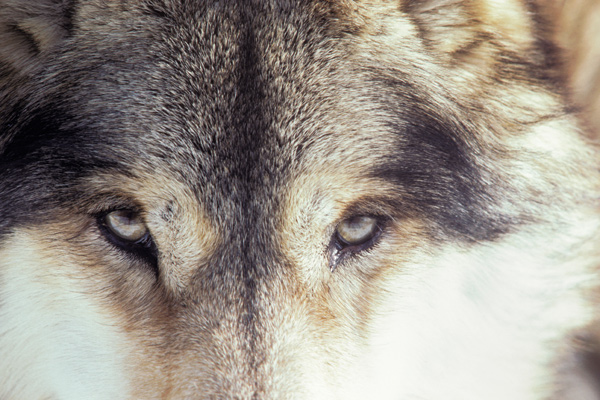One of the greatest difficulties environmental activists have always had in the war for hearts ’n’ minds is that they so often seem priggish and negative. Everyone knows what they are against (central heating, fun, cod and chips, James Delingpole etc). Fewer people know what they are for. Here, therefore, is George Monbiot’s attempt — shot through — no, positively ravished — with personal feeling — to tell us. He offers, he says, a set of ideas ‘not about abandoning civilisation but about enhancing it […] to “love not man the less, but Nature more”.’
‘Rewilding’, in his definition, means something different from ‘stewarding the environment’ or ‘conservation’: the idea is not to control or protect ecosystems so much as to give nature a chance to get on with it, and to enjoy the results. We live, as Monbiot laments, in a world where many of us encounter nature no more closely than when feeding the ducks, and ‘the greatest trial of strength and ingenuity we face is opening a badly designed packet of nuts’. Like the philosopher John Gray, to whose recent The Silence of Animals this would be an amiable companion, Monbiot believes that an encounter with the wild serves a spiritual need. In rewilding our surroundings we also rewild ourselves.
He dreams of letting forest re-establish itself where dismal ‘conservationists’ insist on maintaining the desert of heather-and-scrub that centuries of overgrazing have left us. He wants to see beavers plashing in our rivers, ospreys, wolves and (ideally) elephant wandering the Welsh hills and the Scottish highlands, if not the South Downs. He offers well-explained and meticulously evidenced reasons why rewilding large parts of the country could be both economically and ecologically advantageous. But he makes no bones about the deep reason he’s in favour: which is that it would be amazingly cool.
It’s hard not to agree. Bare lists of vanished megafauna from this continent or that make one thirst for, if not a jurassic park, at least a paleolithic one. How’s this, for instance, for a sample of the animals that used to live in Australia?
Among them was a spiny anteater the size of a pig; a giant herbivore a bit like a wombat, which weighed two tonnes; a marsupial tapir as big as a horse; a ten-foot kangaroo; a marsupial lion with opposable thumbs and a stronger bite than any other known mammal, which could prop itself up on its tail in order to stand on its hindlegs and slash with its tremendous claws; a horned tortoise eight feet long; a monitor lizard much bigger than the Nile crocodile.
Nowadays, the abiding image is of a cane toad cheerfully swallowing a lit cigarette.
The vanishing of what Monbiot calls ‘keystone species’ from ecosystems can, and has, resulted in ‘trophic cascades’ — domino-effect catastrophes where the disappearance of a top predator has huge implications for species apparently quite unrelated. Restoring them can often speedily reverse the process. There’s fascinating evidence of how reintroducing wolves to Yellowstone Park, for instance, resulted in the rapid reforestation of the riverbanks and booms in beavers, songbirds, otters, muskrats, fish, frogs, reptiles and even bears. Life, as they say, finds a way.
Monbiot is seldom happier than when paddling seven miles out into Cardigan Bay to go fishing for mackerel (or, on one near-fatal expedition, albacore), or cantering 35 miles across Kenya in company of a Maasai warrior. His prose turns distinctly purple when he finds himself in proximity to a corncrake or an osprey, or when, in a hole in the ground in the Mendips, he holds in his hands the eight-inch atlas vertebra of a giant bronze-age bull.
He’s epiphany-prone, is our author, and some of this stuff is a little overheated. We are presented early on with the image of Moonbat, blood well and truly up, sitting in his kayak staring into the eye of a dead fish — ‘a disc of cold jet’, since you ask — and saluting it: ‘My fellow predator, cold-blooded daemon, brother disciple of Orion.’ Soon afterwards he pays tribute to his brother disciple of Orion by filleting it with a penknife and gobbling it up raw right there on the riverbank. If he squats on his haunches and howls while he does so, we aren’t told.
But I do not come to mock Monbiot — not really — and inasmuch as I do come to mock him I don’t do so, as some will assume, just because he’s a leftie and I’m writing in The Spectator. I think he is, by and large, an extremely good thing. He’s a proper reporting journalist, he can write, and he stands for something — which puts him, these days, well ahead of most of our tribe.
Plus, this peculiar and involving book — three-quarters exhilarating environmental manifesto, one quarter midlife crisis — has an enormous amount to recommend it. There are things in here, I don’t hesitate to say, that will cheer even those who would expect to find themselves automatically at odds with an environmental journalist for the Guardian. There’s some extraordinarily good and crunchy material on the way farm subsidies and fishing laws bugger up the environment, for instance, and about the wrong-headedness and scientific illiteracy of a political and bureaucratic process — not only in farming but in conservation — captive to short memories and the vested interests of absentee landlords and industrial farming conglomerates.
Monbiot could make common cause with UKIP in resisting the diktats of the European Union. But the great villains of the piece are sheep: ‘No wild animal resembling the sheep has ever existed in Britain or Western Europe [and] because they were never part of our native ecosystem, the vegetation of this country has evolved no defences against them.’ ‘I have an unhealthy obsession with sheep,’ he admits. ‘It occupies many of my waking hours and haunts my dreams. I hate them.’ Where some see an unspoilt wilderness in the Cambrian Mountains, Monbiot sees a desert.
Yet he’s not as dogmatic as you might think. One chapter has him wrestling conscientiously with the arguments of a Welsh sheep-farmer who sees ‘rewilding’ as a romantic and essentially eradicative intervention (‘yells “cleansing” to me’), hostile to the interests of the human beings who live on the land. Monbiot is all too aware that — alas — the main examples the modern world shows of successful rewilding have not been the results of interventions by well-meaning environmentalists: they have followed naturally in the wake of wars, genocides and other humanitarian catastrophes. There’s a lot here to digest and think about, much to be excited by, and the odd bit — the author having a solemnly Proustian moment eating grubs in his Welsh garden, for instance — to giggle at.
About those elephant, incidentally: he’s not joking. There’s a good case to be made, he says, that a lot of British flora grows the way it does because it is historically adapted to being browsed by the straight-tusked elephant, last seen hereabouts 115,000 years ago. Isn’t that remarkable? He says, somewhat ruefully: ‘I have seen no discussion about the reintroduction of elephant to Europe, though I would like to start one.’ Me too!







Comments